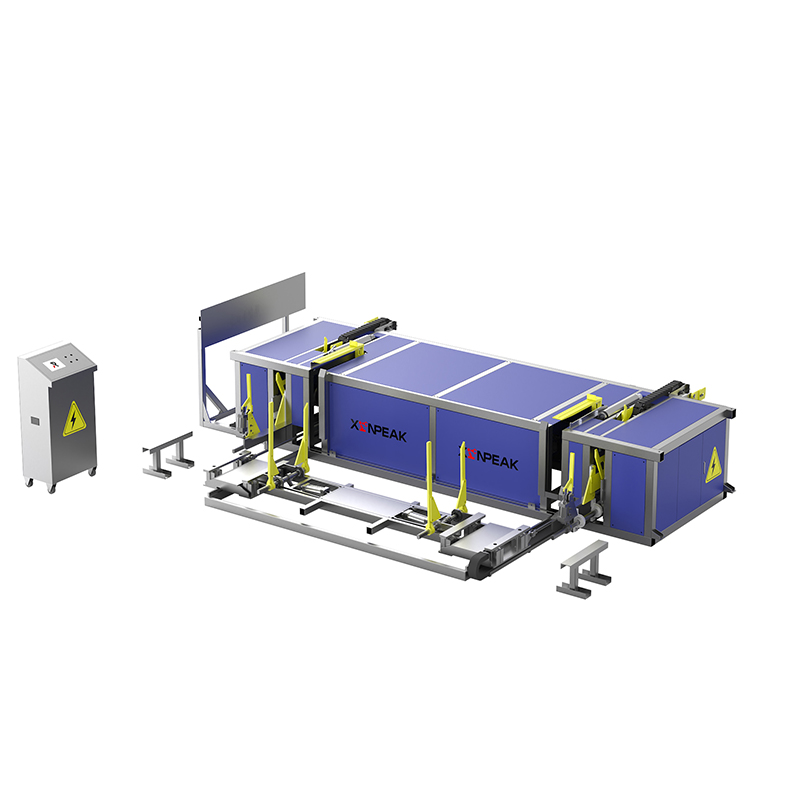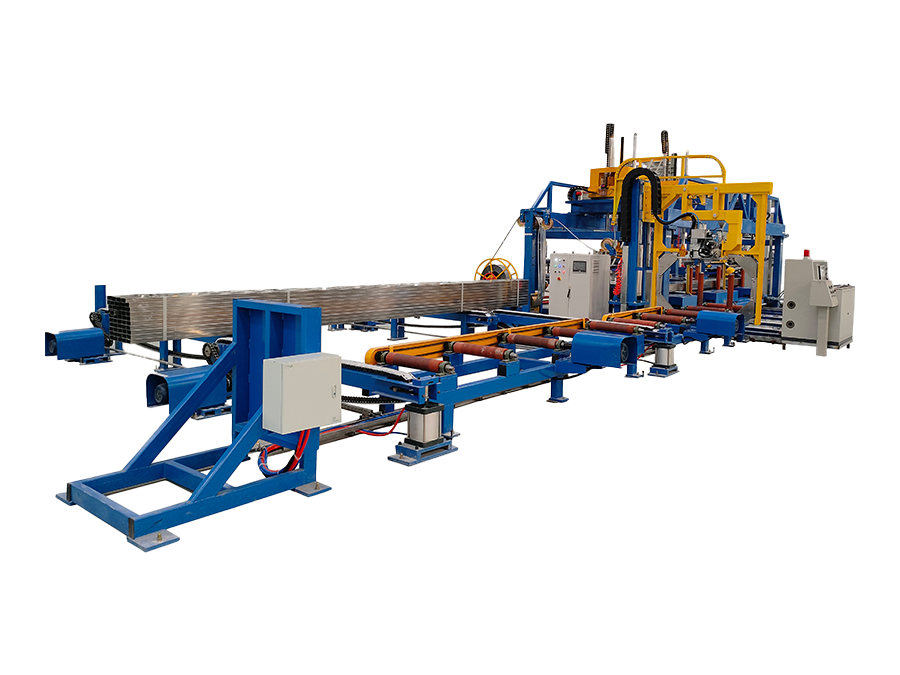Online
What are the advantages of automatic steel pipe palletizers over manual palletizers?
2025-08-14
Compared to manual palletizing, automatic steel pipe palletizers offer significant advantages in terms of efficiency, cost, quality, safety, flexibility, and data management. A detailed analysis is as follows:
I. Efficiency Advantages
1. High-Speed Continuous Operation
Automatic steel pipe palletizers can operate 24 hours a day without fatigue or rest breaks, whereas manual palletizing requires shifts, and efficiency decreases significantly with longer working hours.
Comparison: While an average worker can palletize 300-400 steel pipes per hour, a high-end automatic palletizer can reach speeds of 1,200-1,300 times per hour, achieving a 2-3 times increase in efficiency. Based on a 24-hour production schedule, one machine can replace 12 workers.
2. Precision Control and Stability
Automatic palletizers utilize a PLC control system and sensors (such as position sensors and vision sensors) to achieve millimeter-level positioning, ensuring consistent pallet placement every time, reducing errors and deviations associated with manual operation.
The stable mechanical structure prevents problems such as skewed or collapsed stacks caused by fatigue or negligence during manual palletizing. II. Cost Advantages
1. Long-Term Labor Cost Savings
Manual palletizing requires hiring multiple workers, and there are costs associated with wages, benefits, and training. While automatic palletizers require a higher initial investment, they offer lower long-term operating costs and are particularly suitable for large-scale, continuous production scenarios.
Case study: After introducing an automatic palletizer, a steel pipe plant reduced labor costs by 65%, and equipment maintenance costs were far lower than the ongoing labor investment.
2. Reduced Hidden Costs
Manual palletizing can damage steel pipes (such as scratches and deformation) due to improper operation, increasing rework and scrap costs. Automatic palletizers use flexible gripping devices to minimize damage to steel pipes.
III. Quality Advantages
1. Standardized Palletizing Modes
Automatic palletizers can be pre-set with various palletizing rules (such as number of layers, arrangement, and spacing) to ensure consistent palletizing quality across each batch, meeting standardized warehousing and transportation requirements.
Manual palletizing quality is significantly affected by the worker's skill level and experience, making long-term stability difficult to guarantee. 2. Adaptability to Complex Scenarios
Automatic palletizers can accommodate steel pipes of varying diameters, lengths, and shapes (such as round, square, and special-shaped pipes). They use vision systems to identify the pipe's posture and dynamically adjust its gripping and placement strategies.
Manual palletizing significantly reduces efficiency and is prone to errors when handling multiple specifications and mixed batches of steel pipes.
IV. Safety Advantages
1. Reduced Labor Intensity
Palletizing steel pipes involves heavy lifting and repetitive movements. Long-term manual operation can easily lead to occupational diseases such as muscle strain and lumbar spine problems. Automatic palletizers relieve workers from heavy physical labor and reduce the risk of work-related injuries.
2. Avoiding Hazardous Environments
In harsh environments such as high temperature, high humidity, dust, or noise, automatic palletizers can replace manual palletizing tasks, protecting worker health.
V. Flexibility Advantages
1. Rapid Changeover and Adjustment
Modern automatic palletizers allow for rapid modification of palletizing parameters (such as the number of layers and arrangement) via touchscreens or a host computer to adapt to varying customer order requirements. Manual changeovers require retraining workers or adjusting work processes, which is time-consuming and prone to errors.
2. Multitasking Collaboration
Automated palletizers can be integrated with conveyor lines, packaging machines, warehousing systems, and other equipment to achieve full process automation. For example, after palletizing, they can automatically trigger a forklift or AGV to move the pallet, reducing waiting time in intermediate links.
VI. Data Management and Traceability Advantages
1. Real-Time Production Data Collection
Automated palletizers can integrate sensors and IoT technology to record data such as palletizing quantity, speed, and fault information in real time, providing decision support for production management.
Manual palletizing data relies on manual recording, which is prone to omissions and errors.
2. Quality Traceability and Improvement
Analyzing palletizer operating data can quickly identify the root causes of quality issues (such as gripper wear and sensor failure), optimize maintenance plans, and improve Overall Equipment Effectiveness (OEE).
Contact Us
You can contact us through the following four methods. We will reply to your inquiry within 2-8 hours after receiving it!
Call Us
Send Email
Leave a Message
Add WeChat or WhatsApp







